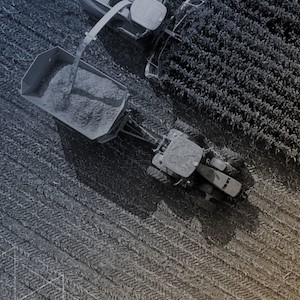10 Technology Tools for an Easier, More Accurate GLOBALG.A.P. Audit
In just two decades, Global Good Agricultural Practices (GLOBALG.A.P.) has grown from a retailer-driven initiative to the world’s leading farm assurance program, writes Erin Hightower on CropLife.com. Today, GLOBALG.A.P. codes, programs, and standards continue to exist because of growing, worldwide concerns about food quality and safety.
GLOBALG.A.P. Certification
One of the program’s hallmarks is the GLOBALG.A.P. certification, an opportunity for growers to demonstrate, to retailers and buyers, their commitment to advancing good agricultural practices. According to the Food and Agriculture Organization, GLOBALG.A.P. certification is becoming an international standard for fresh foods and growers who market their crops to a global audience.
With the rising popularity of GLOBALG.A.P. certification, there’s more need for trusted advisors to help growers achieve this designation – but not necessarily through recommending certain best practices (though that’s certainly something we should offer our grower partners). The area that trusted advisors can bring value to growers is in the simple documentation of those agricultural practices, required to obtain the certification…or should I say, not-so-simple documentation.
Streamlining the Process
The reporting paperwork required to achieve GLOBALG.A.P. certification is, to put it bluntly, daunting. However, technology offers hope and opportunity, both in fulfilling the requirements needed to obtain certification, as well as streamlining time spent on documenting and showing those activities.
MORE BY CROPLIFE
2024 Annual CropLife Ag Tech Awards of Excellence — Nominations Are Now Open
The Urgency of Rapid and Accurate In-Field Testing to Tackle Crop Diseases
Manual record-keeping of agricultural practices is common, especially in industries where mechanization is still catching on, like orchards and vineyards. But technology presents the greatest opportunity to easily and accurately document many agriculture practices that are required for GLOBALG.A.P. audits.
Here are 10 technology solutions that can reduce time spent monitoring, documenting, and reporting on farm operations throughout the growing year. While most growers likely already use some of these solutions, others will find these to be eye-opening and a new opportunity, hopefully, worth considering.
Technology 1: Farm Management Information Systems (FMIS)
All the technology and data collection tools in the world don’t matter if there’s not a central “hub” where all information and data is being captured, stored, and organized for easy reporting. This is why a FMIS operations management system, like the John Deere Operations Center, must be used to create that singular place to manage all operational records.
While any system can be used, per grower preference, I strongly recommend choosing one that has an automated cloud backup system, as it will offer protection against document loss due to natural disasters, human error, or nefarious actions.
When all technology tools are connected to an operations management system, manual logging and notetaking are no longer needed, and all reporting can be done via easy downloads and spreadsheets vs. manually.
Continue reading at CropLife.com.









